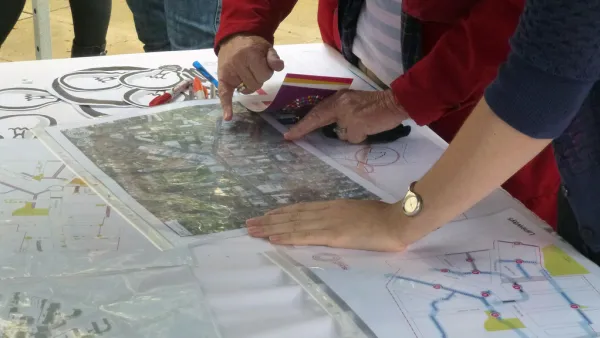An overview of how urbanists in California have shifted their thinking about repairing urban cores. The article is by Howard Blackson III, an urban designer.
With crumbling streets and bridges and empty buildings lacking funding for renovation, cities are finally learning a tough lesson about the economic risks of letting infrastructure deteriorate.
Howard M. Blackson III, an urban designer, opines that too much emphasis has been put on suburban sprawl, but attitudes are changing.
“Our most recent generation is rejecting their parent’s suburban lifestyle and the well-known social and health issues these placeless-places churn out. The 21st century is witness to the theoretical end to the historically devastating Urban Renewal policies and programs formulated during the mid-century modernist era.”
Instead of calling on deteriorating structures to be razed, urban planners and developers in the post-redevelopment era are pushing to repurpose them, according to Blackson. The talk around urbanism is focused more on designing with a community’s unique character in mind, he added.
“After 30 years of New Urbanists making the argument for nurturing and cultivating our historical building fabric, this more pragmatic role of stewardship is now being directed towards our city’s infrastructure. This shift from relying on singular 'level of service' measurements towards a more localized expectation for holistic 'place making' is deeply resonating with Americans.”
FULL STORY: One Block at a Time…

National Parks Layoffs Will Cause Communities to Lose Billions
Thousands of essential park workers were laid off this week, just before the busy spring break season.

Retro-silient?: America’s First “Eco-burb,” The Woodlands Turns 50
A master-planned community north of Houston offers lessons on green infrastructure and resilient design, but falls short of its founder’s lofty affordability and walkability goals.

Delivering for America Plan Will Downgrade Mail Service in at Least 49.5 Percent of Zip Codes
Republican and Democrat lawmakers criticize the plan for its disproportionate negative impact on rural communities.

Test News Post 1
This is a summary

Test News Headline 46
Test for the image on the front page.

Balancing Bombs and Butterflies: How the National Guard Protects a Rare Species
The National Guard at Fort Indiantown Gap uses GIS technology and land management strategies to balance military training with conservation efforts, ensuring the survival of the rare eastern regal fritillary butterfly.
Urban Design for Planners 1: Software Tools
This six-course series explores essential urban design concepts using open source software and equips planners with the tools they need to participate fully in the urban design process.
Planning for Universal Design
Learn the tools for implementing Universal Design in planning regulations.
EMC Planning Group, Inc.
Planetizen
Planetizen
Mpact (formerly Rail~Volution)
Great Falls Development Authority, Inc.
HUDs Office of Policy Development and Research
NYU Wagner Graduate School of Public Service




























